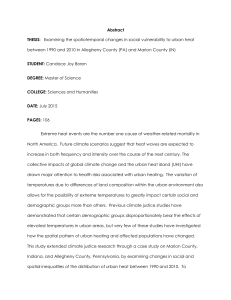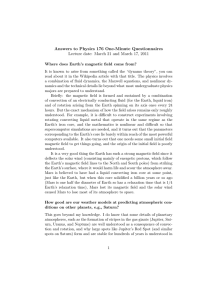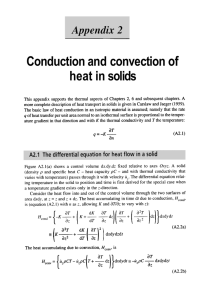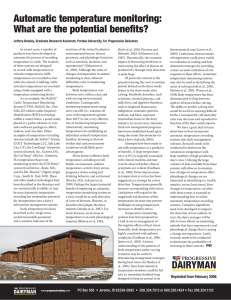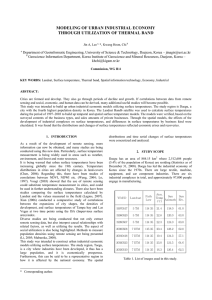Passive mechanical behavior of skeletal muscles
advertisement
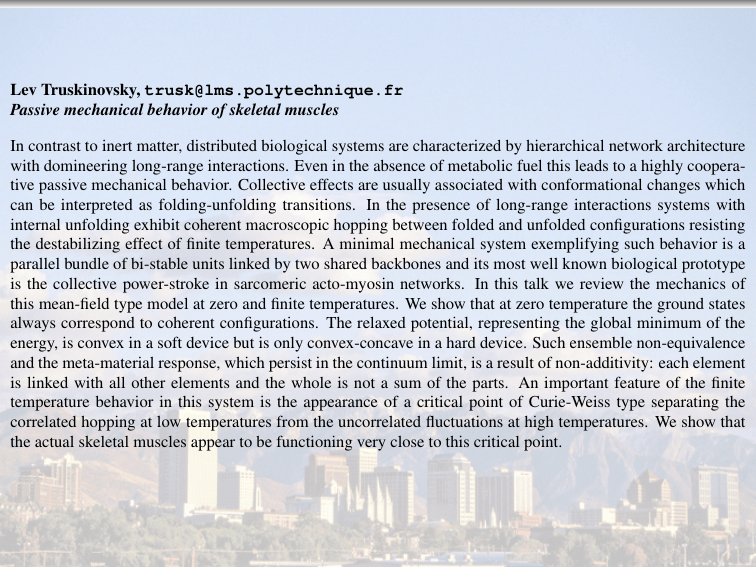
Lev Truskinovsky, trusk@lms.polytechnique.fr Passive mechanical behavior of skeletal muscles In contrast to inert matter, distributed biological systems are characterized by hierarchical network architecture with domineering long-range interactions. Even in the absence of metabolic fuel this leads to a highly cooperative passive mechanical behavior. Collective effects are usually associated with conformational changes which can be interpreted as folding-unfolding transitions. In the presence of long-range interactions systems with internal unfolding exhibit coherent macroscopic hopping between folded and unfolded configurations resisting the destabilizing effect of finite temperatures. A minimal mechanical system exemplifying such behavior is a parallel bundle of bi-stable units linked by two shared backbones and its most well known biological prototype is the collective power-stroke in sarcomeric acto-myosin networks. In this talk we review the mechanics of this mean-field type model at zero and finite temperatures. We show that at zero temperature the ground states always correspond to coherent configurations. The relaxed potential, representing the global minimum of the energy, is convex in a soft device but is only convex-concave in a hard device. Such ensemble non-equivalence and the meta-material response, which persist in the continuum limit, is a result of non-additivity: each element is linked with all other elements and the whole is not a sum of the parts. An important feature of the finite temperature behavior in this system is the appearance of a critical point of Curie-Weiss type separating the correlated hopping at low temperatures from the uncorrelated fluctuations at high temperatures. We show that the actual skeletal muscles appear to be functioning very close to this critical point.





